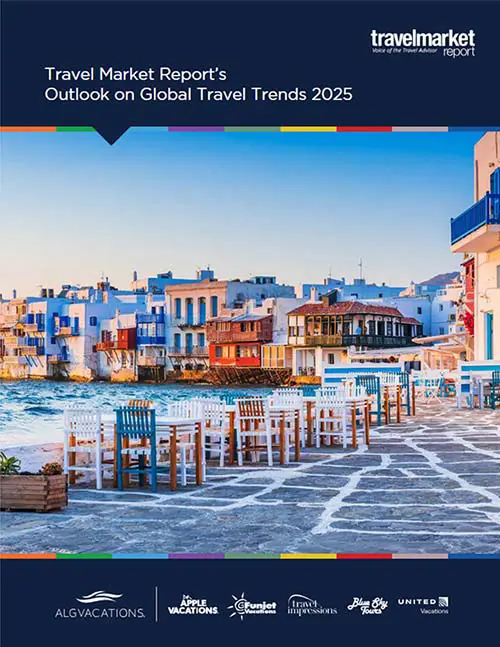What Travel Advisors Need to Know Before Saying Yes to a FAM Trip
by Dori Saltzman
Photo: Shutterstock.com
If you’re a travel advisor, chances are you’ve seen the “travel for free” ads meant to entice new entries into the travel agency industry with promises of free trips. And while free trips are not a reason to become a travel advisor – and most “free” trips aren’t actually free – discounted FAM trips are a perk of being an advisor.
But just because you’ve been invited on a FAM doesn’t mean you should say yes.
“I don’t go on a FAM just to go on a FAM,” said Darrin Scheidle, CEO of That Place for Travel.
It’s not just about getting a discounted trip, Nicole Baker, Ensemble’s training operations manager, added.
FAM trips, while nice, are tools – for the supplier or tourist board hosting it and for the advisors attending. There should be an ROI when all is said and done.
“Is it something you’re going to be selling? Don’t just go out there and take a FAM and then walk away… make it relevant,” Scheidle added.
Annette Stellhorn, founder and president of Accent on Travel, agreed.
“That’s the number one thing. Is it going to help me sell more travel to a destination or on a product that I believe I have the market to sell to?” she said.
The first thing advisors should do, before accepting any FAMs, is “narrow down what destinations and suppliers they want to work with,” added Terri Henderson, president of Geneva Travel & Cruise Inc. “Really focus on either what you specialize in, what you enjoy doing, and what you want to grow your business in and choose accordingly… From there, you can choose your FAMs accordingly.”
There are three points of relevancy advisors should be considering when deciding to say yes to a FAM or not.
You have a market for the product/destination but you’re not familiar with it
The FAM trips you take should be related to what you’re getting inquires on, both Scheidle and Henderson said.
“I really would advise them to look at their sales, see what you’ve been booking, or what requests you are getting,” Henderson said. “If you’re getting a lot of Europe, but you’re not very familiar with Europe, you should 100% take a FAM somewhere in Europe and maybe even specifically to the countries that you’re getting requests for.”
Demand plus unfamiliarity is why Scheidle signed up for an upcoming FAM to Western Australia. He has a small chunk of clients who like to cruise out of Australia, but “I know nothing about the West Coast,” he explained. “This is an opportunity for me to learn about the other side of the country.”
You want to sell a destination/product and you need to learn about it in order to market to potential clients
Just because you’re not getting requests for a destination or product doesn’t preclude you from taking a FAM trip. Perhaps, it’s a type of travel or destination you want to be selling. In that case, you need the education in order to start marketing yourself as a specialist.
“I had decided years ago that I wanted to specialize in river cruises,” Henderson told TMR. “One of the first FAMs … was a river cruise on the Rhine, which really accelerated my business in that area.”
However, advisors shouldn’t just pick some place that sounds cool if they really don’t think they want to or will be able to sell it.
“I just passed on a FAM to Uzbekistan,” Scheidle said. Not only has he never had any requests for that part of the world, he has no interest in selling it.
You’re already a specialist but there’s something new to see/experience
Even if you’re already a specialist in a destination or product, there is always something new to experience.
“It’s not always just going to be the same thing,” said Baker. “Maybe they’ve experienced the destination or the supplier before, but have they experienced it in this way?”
“I’m pretty selective when it comes to FAMs. I’m choosing them basically on my niche, my specialty, and making sure that it’s really helping support that level of my business,” Henderson said.
But Stellhorn added that it’s not always appropriate for an expert to take a spot on a FAM, especially if there’s nothing new or you’re only doing it for marketing purposes.
“I believe that we need to make room for people who need to experience that as a first timer,” she said. “If I don’t really need it and it’s just for me to have fun and be part of a crowd and do some image marketing, then I feel like it’s time for me to say, who else at the agency could use this instead?”
As example, she told TMR about two FAM trips to Africa she was presented with. Because she’s already been to Africa 12 times, she chose to give those opportunities to other advisors.
“Could I use it? Yes. Have I been to that exact place before? No. But weighing in everything, it’s better for me to train [others], than for me to be more trained, because I can only do so much business,” she said.
Make the most of your FAM opportunity… if you want to be invited again
Once an advisor has decided that a FAM trip is the right opportunity for them, they should make every effort to make the most of it. Both for their own sake and to show the FAM host that they’re not simply taking advantage.
At Accent on Travel, advisors have to agree to a list of obligations in order to be permitted to accept a FAM. “You have to be able to carry your own luggage. You have to be at every event. You have to participate in all activities… And if you don’t sign this, you’re not going to go on a FAM,” Stellhorn said.
Ensemble’s Baker said the work should start even before the FAM departs. For Ensemble-hosted FAMs, advisors are required to undergo advanced training including Ensemble and supplier training.
If an advisor is going on a Sandals FAM, for instance, they should have taken the Sandals training before they depart. (Some suppliers require advisors to complete online training before they’re even eligible for FAM trips.)
Advisors should also be making the most of their time on a FAM capturing photo and video content they can use to market.
For Ensemble FAMs, advisors are required to post to their social channels every day while on-site.
“We’ve had a lot of success stories of them coming back and saying, my social media helped me turn this into a sale right away,” Baker told TMR.
How many FAM trips a year should an advisor take?
Each of the advisors TMR spoke with had a slightly different take on how many FAM trips per year is the right number.
“Agents have to learn… but they have to sell at the same time, and they have to get out there. And how do you balance that out? It’s a balancing game,” Scheidle said.
Of the advisors we spoke with Henderson travels the most. She tries to visit Europe at least once or twice a year, and has a goal to see a different country every year, as well as revisit one that she specializes in, especially if there’s something new.
But she does have a budget, which impacts how many and which FAM trips she accepts.
“I try to be gone no more than six weeks throughout the year,” she said. “If it’s a really long FAM and I’ve already been gone for five weeks, I probably wouldn’t take that one.”
Stellhorn also believes advisors should travel out of the country at least once a year, but she believes that four weeks is about the max an advisor should be spending on FAMs (or any travel).
Similarly, Scheidle, said he doesn’t recommend taking more than three to four FAM trips per year. Any more than that, he said, becomes information overload. He added, there has to be space after each FAM trip to synthesize everything you’ve learned and figure out how to use that knowledge to expand and better serve your clientele.
“It’s very key that you don’t do too many and overwhelm yourself,” he said.
On the other hand, advisors also shouldn’t spend all their time in the office just selling, either. Stellhorn told TMR that at minimum, advisors should be out seeing destinations and products on FAMs (or some other type of travel) at least seven selling days a year.
She has to encourage some of her advisors to take those seven days, because they don’t want to leave the office.
“The people that sell and are doing two and three million worth of travel, they want to be there for their clients. They want to be able to sell more,” Stellhorn said, adding these advisors need to understand the importance of investing their time and money into first-hand learning.
Getting out there and seeing places and products in person helps you be a “well-rounded agent,” said Baker.
Like Henderson, Stellhorn has a budget she sticks to for herself and her advisors.
“The FAM budget in our office can’t be any more than 10% of the profit they’re bringing to the business. If they’re selling a million dollars, the budget is $10,000.”
But, the FOMO?
TMR asked the advisors, what about the FOMO (fear of missing out) that might come with saying no to a FAM?
“If it’s not the right trip for them, then there’s always an opportunity to use their agent rates and go and explore it on their own,” Ensemble’s Baker told us.
FAMs have a specific purpose, but that doesn’t mean advisors can’t go and explore on their own.
“Being in the travel industry, we still get agent rates, so they’re still able to do it. It’s just going to be a different experience,” she said.
Are there any FAM red flags?
One topic that came up in TMR’s conversation with Scheidle is the quality of FAM trips. Not all FAMs are the same, he said, and advisors should be wary of taking what are essentially group trips arranged by other travel advisors and not legitimate FAM trips.
“I get FAM offers all the time, but they’re really not FAMs.
FAM trips, he said, are put together by tourist bureaus, vendors, DMCs, and the like. They tend to be significantly discounted and they include airfare (generally from a specific origin city).
Education is usually a part of the FAM schedule, as well.
“FAM” trip invitations that are missing any of these pieces should be looked at carefully before saying yes.
























